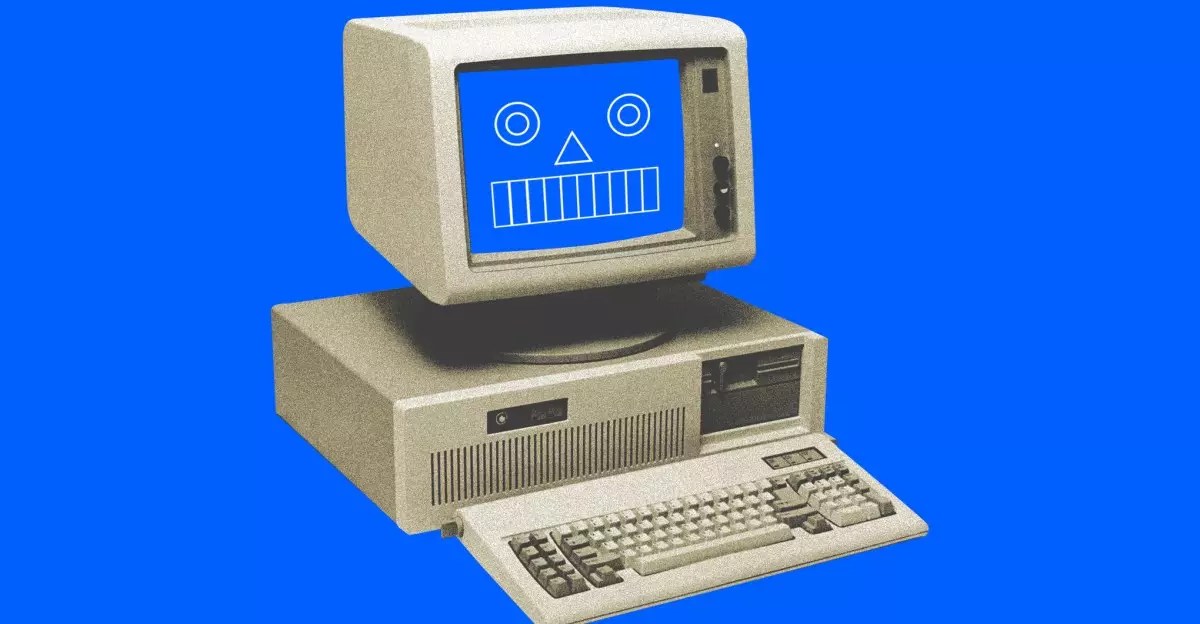In today’s rapidly evolving technological landscape, artificial intelligence (AI) is not merely an innovation; it’s a battleground for startup supremacy. The latest developments in AI education tools underscore this point, as two significant players—OpenAI and Anthropic—fiercely vie for dominance in the academic sector. The urgency in their announcements, each tailored for higher education, suggests an aggressive strategy to claim the allegiance of students and educators alike, emphasizing their broader aspirations to become indispensable tools in the learning environment.
Breaking New Ground in Education with Claude
Anthropic’s recent unveiling of Claude for Education signifies its ambitious leap into the higher education sphere. By unveiling partnerships with notable institutions such as the London School of Economics and Northeastern University, Anthropic aims to embed its AI tools directly within the intricate fabric of academia. This initiative introduces “Learning mode,” a groundbreaking feature that shifts the traditional dynamics of student-AI interaction. Instead of providing straightforward answers, this mode employs a Socratic method, encouraging critical thinking and problem-solving.
This move signifies a strategic pivot in how AI can stimulate intellectual growth rather than merely serve as a digital crutch. Larry Kramer, President of LSE, articulated a broader vision when he remarked on the transformative potential of AI in education. In challenging students to engage more deeply with their studies, Anthropic positions itself not just as a tech provider but as a partner in cultivating the next generation of thinkers.
OpenAI: Establishing a Legacy in Academia
In stark contrast, OpenAI has been making waves in the educational sector for nearly a year, having launched ChatGPT Edu, a specialized version of its renowned chatbot. With a commitment of $50 million towards the NextGenAI Consortium—a collaborative effort involving fifteen colleges—OpenAI is not just dipping its toes in the academic water; it’s diving in headfirst. This proactive approach positions OpenAI as a pivotal player, already well on its way to embedding its technology into the educational fabric of numerous institutions.
Their recent move to offer ChatGPT Plus for free to U.S. and Canadian college students until May is particularly telling. This gesture not only enhances accessibility but also strategically cultivates a generation of users who may become lifelong advocates of their technology. OpenAI’s focus on helping students navigate both academic pressures and the demands of an AI-laden workforce provides a compelling case for its relevance in modern education.
The Battle for the Minds of Tomorrow
The simultaneous launches of education-focused tools from both startups reflect a crucial understanding: college students represent a fertile ground for AI adoption. The ramifications of this competition extend beyond mere market share; they signify a concerted effort to shape how emerging generations will interact with AI. As students increasingly grapple with the complexities of the digital age, the tools they become accustomed to in their formative years will fundamentally alter their competencies and expectations in the workforce.
In this context, both Anthropic and OpenAI are not just vying for market leadership; they are also defining cultural and educational norms for the future. Their contrasting approaches—for instance, Anthropic’s focus on critical engagement versus OpenAI’s extensive accessibility strategies—illustrate the diverse philosophies shaping AI in education. However, this competition comes with significant implications: it places tremendous responsibility on these companies to ensure their tools promote genuine growth rather than merely facilitate shortcuts.
Implications for the Future of Learning
As the race between these AI laboratories unfolds, there are broader implications for the future of learning. The power dynamics of education may shift profoundly, influenced by which AI tool becomes the “default” for this vital demographic. The questions asked, the problems highlighted, and the methodologies adopted through these AI interactions will ultimately shape the skill sets and attitudes of tomorrow’s workforce.
In essence, the ambition of these AI startups reaches far beyond their product offerings. It encapsulates the challenge of nurturing critical thinking and innovation in an era dominated by technological conveniences. As they square off in this critical arena, the evolution of AI in education remains a captivating spectacle—one that will undoubtedly influence how we understand, teach, and learn for generations to come.


Leave a Reply